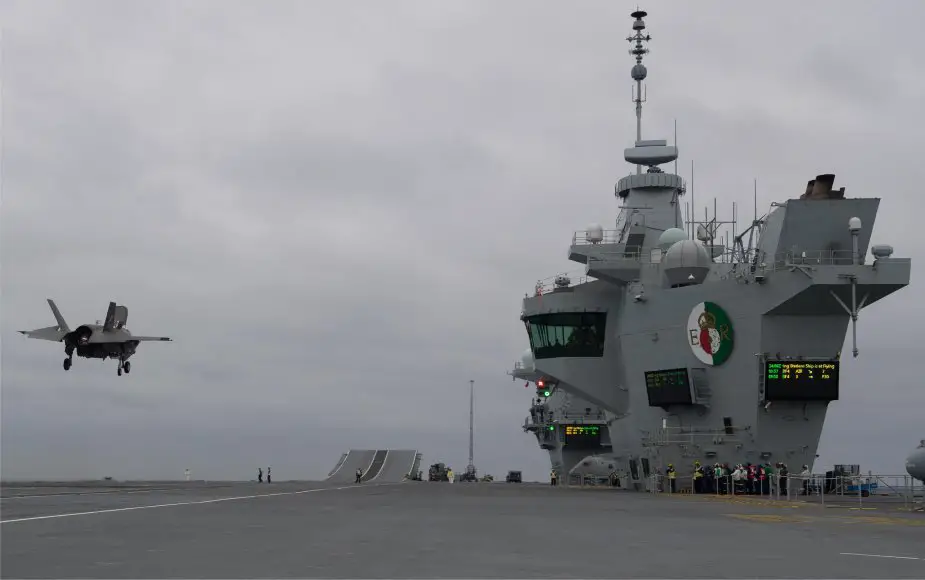Breaking news
US Navy NAVAIR completes PALS certification on HMS Queen Elizabeth.
According to information published by U.S. Navy on April 20, 2021, the Naval Air Traffic Management Systems Program Office (PMA-213) completed Precision Approach and Landing System (PALS) certification on the United Kingdom’s newest aircraft carrier, HMS Queen Elizabeth (R08), completing a critical step in readying the ship for its first operational deployment.
Follow Navy Recognition on Google News at this link
 An F-35B prepares to land aboard the Royal Navy's HMS Queen Elizabeth R08 (Picture source: US Navy)
An F-35B prepares to land aboard the Royal Navy's HMS Queen Elizabeth R08 (Picture source: US Navy)
The PALS system includes the AN/SPN-41B Instrument Carrier Landing System (ICLS), previously installed by PMA-213 as a foreign military sales (FMS) effort, and the AN/USN-3 Joint Precision and Approach Landing System (JPALS) system, installed as a U.S. asset to support the future embarkation of Marine Fighter Attack Squadron (VMFA) 211’s F-35Bs aboard HMS Queen Elizabeth during its inaugural operational deployment.
The early phases of the installation were supported remotely by the Naval Air Warfare Center Webster Outlying Field (NAWCAD WOLF) Air Traffic Control and Landing Systems (ATC&LS) Division. Once the initial installation activities were completed, the NAWCAD WOLF team, led by Shawn Magoon, travelled to the United Kingdom in early February to finalize the installation and support the certification, but first had to overcome a few challenges.
The NAWCAD WOLF team was joined by members of Naval Test Wing Atlantic ATC&LS Test Branch, Air Test and Evaluation Squadron (VX) 23 to complete the at-sea portion of the certification. The ATC&LS Test Branch is the certification authority for all U.S. ships, and in this case for the U.S.-owned JPALS installed aboard the British aircraft carrier, while also supporting certification recommendations for FMS installed systems. Coincidentally, the final certification flights for HMS Queen Elizabeth were completed on the same day another team from PMA-213 was carrying out PALS certification for the Italian aircraft carrier, ITS Cavour (CVH 550) off the U.S. east coast.
The success of the installation and certification of the JPALS and SPN-41B systems aboard HMS Queen Elizabeth was due to the close collaboration between PMA-213, NAWCAD WOLF, VMFA-211 and their U.K. counterparts, Watkins said.
The HMS Queen Elizabeth is the first of the two Queen Elizabeth class aircraft carriers in service with the British Navy. The ship began sea trials in June 2017, was commissioned on 7 December 2017 and entered service with the British Navy in 2020.
The HMS Queen Elizabeth aircraft carrier is able to carry up to forty aircraft, with a normal maximum load of thirty-six F-35s and four helicopters, but she has also a theoretical surge capacity of up to 72 aircraft. The aircraft carrier can be also used as a Maritime Force Protection package with nine anti-submarines Merlin HM2 and five Merlin Crowsnest able to conduct airborne early warning missions. The ship can also carry a mix of Royal Navy Commando Helicopter Force Merlin HC4, Wildcat AH1, RAF Chinooks, and Army Air Corps Apaches.


























